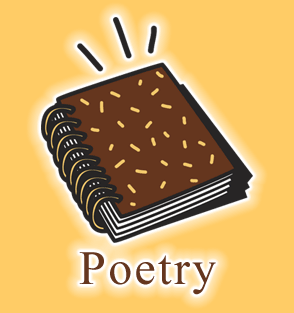
O. Henry is the pen name of William Sydney Porter, one of America's most famous snort story writers. His mother died when he was three; his Father, a physician, became an alcoholic and worked continuously to invent a perpetual motion machine.
Porter left school at age fifteen and went to work in a drugstore. When he began to show symptoms of tuberculosis, he moved to Texas and worked on a ranch. He married and lived in Austin where he began a newspaper called "The Rolling Stone." It failed. He was accused of embezzling bank funds and fled to Honduras.
In 1887, Porter returned to the U.S. because his wife was dying. He was then put in a federal prison in Ohio. Released in 1901, he moved to New York City, where he lived and wrote for nine more years. Porter died a penniless alcoholic. No one knew that he was the famous 0. Henry, master of the ironic ending.
O. Henry begins his stories in interesting ways, and often ends them in even more interesting ways. On the screens below you will find the beginning lines from several of O. Henry's stories.
Read through each of the choices. Consider how to use the beginning to unfold your own story. Spend a few minutes just thinking about a story line. You might want to type a few notes on plot, setting, and character if they come to mind. After you've looked at all the choices, choose the one you like the most.
Choice #1
SPRINGTIME A LA CARTE
"It was a day in March.
Never, never begin a story this way when you write one. No opening could possibly be worse. It is unimaginative, flat, dry, and likely to consist of mere wind. But in this instance it is allowable. For the following paragraph, which should have inaugurated the narrative, is too wildly extravagant and preposterous to be flaunted in the face of the reader
without preparation."
Choice #2
THE GREEN DOOR
"Suppose you should be walking down Broadway after dinner, with ten minutes allotted to the consummation of your cigar while you are choosing between a diverting something serious in the way of vaudeville. Suddenly a hand is laid upon your arm. You turn to look into the thrilling eyes of a beautiful woman, wonderful in diamonds and Russian sables. She thrusts hurriedly into your hand an extremely hot buttered roll, flashes out a tiny pair of scissors, snips off the second button of your overcoat, meaningly ejaculates the one word, 'parallelogram!' and swiftly flies down a cross street, looking back fearfully over her shoulder."
Choice #3
THE GIFT OF THE MAGI
"One dollar and eighty-seven cents. That was all . And sixty cents of it was in pennies. Pennies saved one and two at a time by bulldozing the grocer and the vegetable man and the butcher until one's cheeks burned with the silent imputation of parsimony that such close dealing implied. Three times Delia counted it. One dollar and eighty-seven cents. And the next day would be Christmas."
Choice #4
A RETRIEVED REFORMATION
"A guard came to the prison shoe-shop, where .Jimmy Valentine was assiduously stitching uppers, and escorted him to the front office. There the warden handed Jimmy his pardon, which had been signed that morning by the governor. Jimmy took it in a tired kind of way. He had served nearly ten months of a four-year sentence. He had expected to stay only about three months, at the longest. When a man with as many friends on the outside as Jimmy Valentine had is received in the "stir" it is hardly worth while to cut his hair.
'Now, Valentine,' said the warden,"
Rewrite/Edit
Now that you have finished writing the first draft of your short story,
reread it for the following points;
Does the beginning catch your imagination?
Does your plot unfold in a well-paced and well-structured way? Does the plot have enough complexity to keep the story intriguing? (Imagine the most likely outcome and then add surprises and twists which the reader
not expect.)
Because of the brevity of a short story, you can't spend too much time developing setting. However, the setting often helps determine the mood of the story. So look at your story in respect to mood and setting. Does the setting support a light and humorous story? ...a serious, foreboding story? ...a dark, mysterious story?
Is your main character completely developed and easy to visualize? Can you add some traits to his or her character which give more depth or
interest?
Now revise your story. After you've finished your second draft, your story should be ready a peer review.
Peer Review
Someone should read your story. They can can consider the same questions you did and make suggestions for improvements. You, of course, have the final word on how your story is changed, if at all. Sometimes, however, a fresh eye can spot problems or shortcomings you are unaware of.
Proofread
When you are satis-tied with the content of the story, you will want to check it closely for spelling, punctuation, and usage errors. It is sometimes helpful to read your writing backwards, from the end to the beginning. This helps you focus on the mechanical errors because it prevents you from reading the story for understanding,
When you have finished your final draft of your story, you will probably be curious about how O. Henry actually told the story. Check your library or the Internet to locate an anthology that includes the story you chose. Then see what things you did similarly and what things you did differently from O. Henry.
To share your work - click on Comments and type in your short story.







